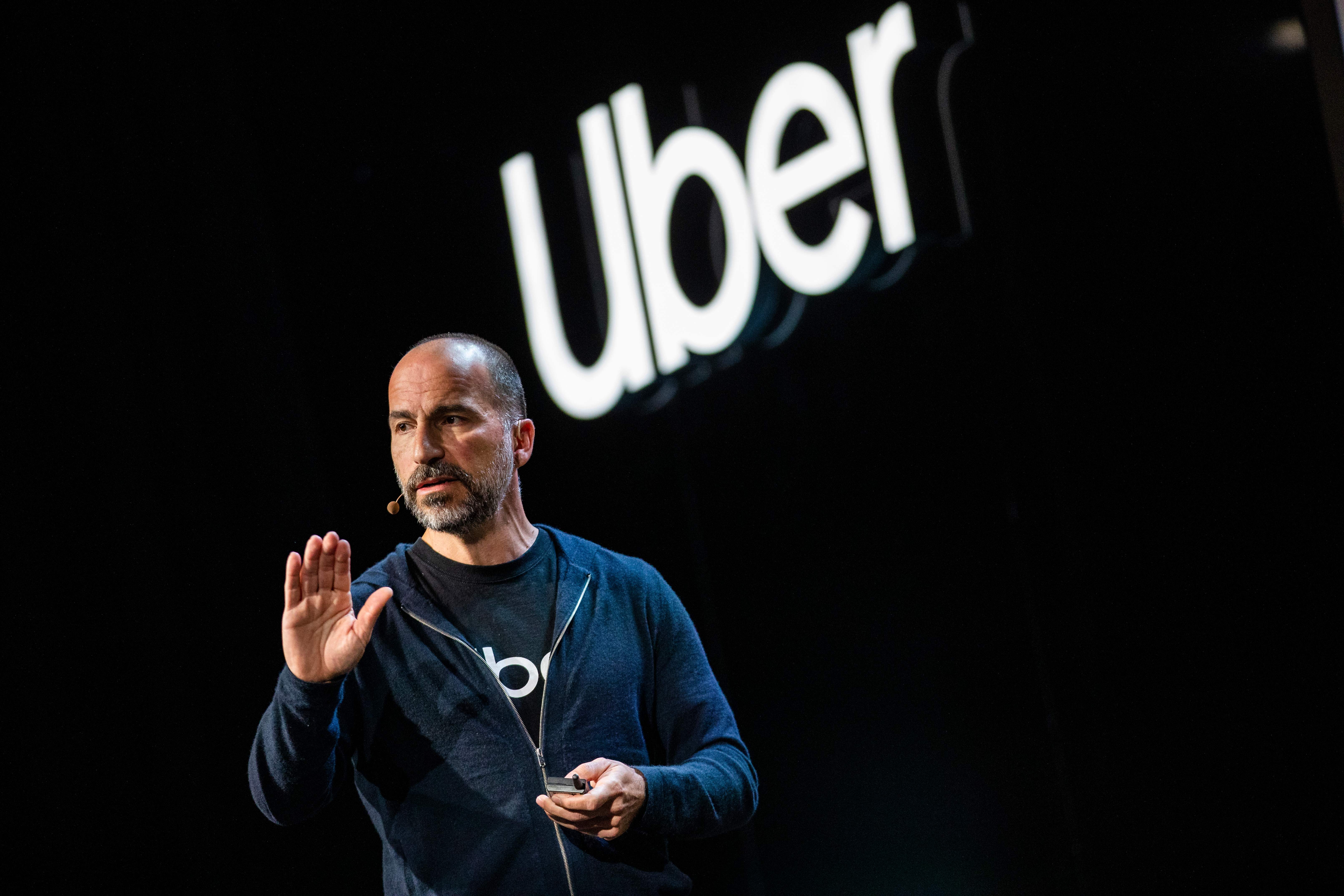Uber beat estimates on the top line and dramatically improved its net losses in its first quarter, but missed on revenue.
Shares were up around 1% in after-hours trading.
Here’s how Uber did versus expectations:
- Loss: 6 cents vs 54 cents expected, according to a consensus of analysts surveyed by Refinitiv.
- Revenue: $2.90 billion vs $3.29 billion expected per Refinitiv.
It’s difficult for investors to compare year-over-year numbers from the company, as the Covid-19 pandemic began to take hold a year ago and severely restricted travel. However, ride-share companies are beginning to bounce back from their pandemic lows as coronavirus vaccines roll out and restrictions are eased.
Overall, Uber’s net loss was $108 million, a tremendous improvement from a $968 million loss in its fourth quarter of 2020. But that was largely due to a $1.6 billion gain from the sale of its self-driving unit, ATG. Uber’s operating loss was still high for the quarter at more than $1.5 billion.
Uber set a goal to reach profitability on an adjusted EBITDA basis by the end of this year, and investors will be waiting for any updates the company can provide on its earnings call later Wednesday.
Its adjusted EBITDA loss was $359 million, which improved by $95 million from the prior quarter. EBITDA refers to earnings before interest, taxes, depreciation and amortization.
Here’s how Uber’s largest business segments performed in the first quarter of 2021:
- Mobility (gross bookings): $6.77 billion, down 38% from a year ago
- Delivery (gross bookings): $12.46 billion, up 166% from a year ago
Delivery revenue also outperformed its core ride-hailing business at $1.7 billion compared to $853 million. The company has relied on its delivery services to make up for lost transit during the pandemic. Uber said the Eats segment revenue was up 28% quarter over quarter.
“Uber is starting to fire on all cylinders, as more consumers are riding with us again while continuing to use our expanding delivery offerings,” CEO Dara Khosrowshahi said in the earnings report.
In an update to shareholders, the company said that merchants on Uber Eats exceeded 700,000 in the first quarter, with the additions of Mr. Beast Burger, Rite Aid and Smoothie King.
The company also entered into an agreement with Gopuff to offer more convenience store and grocery items starting in June.
Uber is also facing an immediate and growing need for more drivers, struggling to meet demand following Covid vaccines and an easing of restrictions. The company said last month it would spend $250 million on a one-time stimulus aimed at getting drivers back on the road. If it doesn’t match supply, the company could face annoyed customers who are having to shell out more cash or even have to put out more incentives.
Uber said it has approximately 3.5 million drivers and couriers on its platform, up 4% quarter-over-quarter but still a 22% year-over-year dip.
Trips on the platform were flat quarter-over-quarter at 1.45 billion, and 13% below the same quarter a year ago. The company said its continued growth in delivery trips are offsetting declines in its mobility unit.
Uber also faced pressure during the quarter in the U.K. after the nation’s Supreme Court upheld a ruling that its drivers are workers, not independent contractors.
Classifying drivers as contractors allows the companies to avoid the costly benefits associated with employment, such as unemployment insurance. If a similar measure ends up passing in the United States, it could make it harder for them to reach profitability.
This story is developing. Please refresh for updates.
